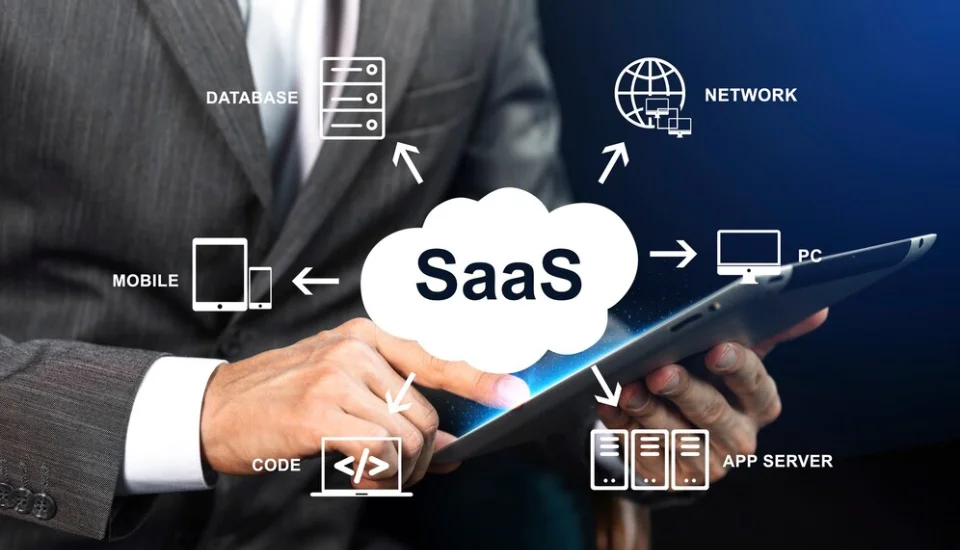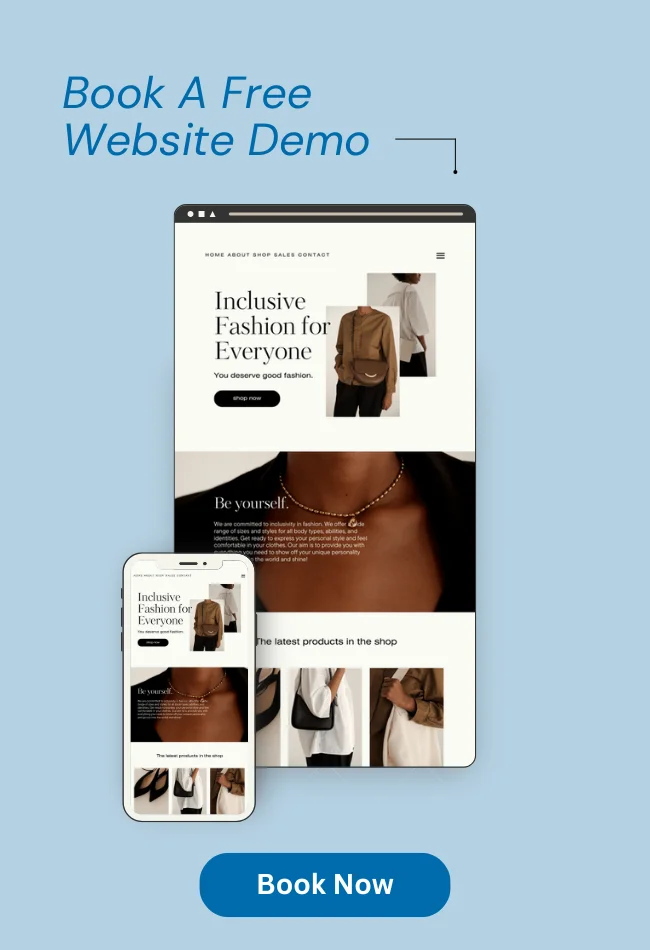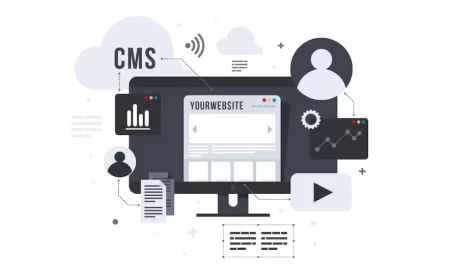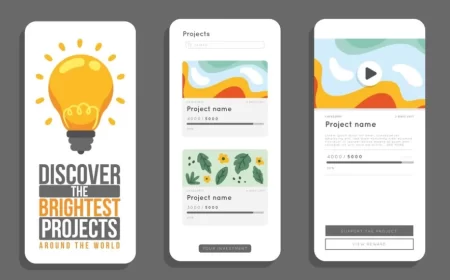In today’s fast-paced digital economy, SaaS products (Software as a Service) have become the backbone of businesses worldwide, from burgeoning startups to established enterprises. No longer just a buzzword, SaaS represents a revolutionary shift in how software is delivered, consumed, and managed. Instead of purchasing and installing software on individual computers or servers, users access applications over the internet, typically on a subscription basis. This model has democratized access to powerful tools, enabling organizations to scale rapidly, innovate efficiently, and focus on their core competencies without the burden of complex IT infrastructure.
This comprehensive guide will explore the fundamental concepts of SaaS products, delve into their myriad benefits, highlight essential features, and showcase inspiring examples across various industries. Whether you’re a business leader looking to optimize operations, a developer considering a SaaS venture, or simply curious about this pervasive technology, understanding the power and potential of SaaS is crucial for navigating the modern business landscape.
What Exactly is a SaaS Product?
At its core, Software as a Service (SaaS) is a cloud-based software delivery model where a third-party provider hosts applications and makes them available to customers over the internet. Users access the software via a web browser or mobile app, eliminating the need for local installation, maintenance, or complex hardware.
Think of it like this:
- Traditional Software (On-Premise): You buy a physical copy or license, install it on your computer, and are responsible for all updates, security, and maintenance. It’s like owning a physical CD or DVD of software.
- SaaS: You subscribe to a service, and the provider handles all the technical heavy lifting—hosting, maintenance, security, and updates. It’s like streaming music or movies; you access it on demand without owning the underlying files.
This subscription-based model typically involves recurring payments (monthly or annually) for access to the software and its features.
The Transformative Benefits of SaaS Products
The widespread adoption of SaaS is driven by a compelling array of advantages for businesses of all sizes:
- Cost-Effectiveness:
- Lower Upfront Costs: No need for large initial investments in software licenses, hardware, or infrastructure.
- Predictable Expenses: Subscription models offer clear, recurring costs, simplifying budgeting.
- Reduced IT Overhead: The SaaS provider handles maintenance, updates, and security, freeing up internal IT resources.
- Scalability & Flexibility:
- Easy Scaling: Businesses can easily scale up or down their usage based on demand, adding or removing users/features as needed without significant technical hurdles.
- Global Accessibility: Access the software from anywhere, on any device with an internet connection, promoting remote work and distributed teams.
- Automatic Updates & Maintenance:
- Always Up-to-Date: SaaS providers automatically push updates, ensuring users always have the latest features and security patches without manual intervention.
- Reduced Downtime: Providers manage infrastructure, backups, and disaster recovery, leading to higher reliability.
- Faster Deployment & Time-to-Value:
- Quick Setup: SaaS applications are typically ready to use almost immediately after subscription, significantly reducing deployment time.
- Rapid Innovation: Providers can quickly roll out new features and improvements, allowing users to benefit from the latest advancements sooner.
- Enhanced Collaboration:
- Many SaaS tools are built with collaboration in mind, allowing multiple users to work on the same documents or projects in real-time, regardless of location.
- Security & Reliability:
- Reputable SaaS providers invest heavily in robust security measures, data encryption, and compliance certifications, often exceeding what individual businesses could afford.
Essential Features of a Successful SaaS Product
Beyond the core delivery model, successful SaaS products share common characteristics that drive user adoption, retention, and overall value:
- Intuitive User Interface (UI) & User Experience (UX): Easy to learn, visually appealing, and delightful to use. A smooth onboarding process is crucial.
- Robust Core Functionality: The software must effectively solve the problem it’s designed for, offering powerful and reliable features.
- Scalability & Performance: The ability to handle increasing user loads and data volumes without compromising speed or reliability.
- Security & Compliance: Strong data encryption, access controls, regular security audits, and adherence to relevant industry regulations (e.g., GDPR, HIPAA).
- Integrations: Seamless connectivity with other popular business tools (CRM, ERP, accounting software, communication platforms) to create a cohesive ecosystem.
- Analytics & Reporting: Dashboards and tools that provide users with insights into their data and usage, demonstrating value.
- Customer Support: Responsive and helpful support channels (chat, email, phone, knowledge base) to assist users.
- Customization & Configuration: While multi-tenancy is common, the ability for users to tailor settings, workflows, and branding to their specific needs.
- API Access: For advanced users or developers to extend functionality and build custom integrations.
- Subscription Management: Easy ways for users to upgrade, downgrade, or manage their subscriptions.
- Mobile Accessibility: Responsive design or dedicated mobile apps for on-the-go access.
Inspiring Examples: Leading SaaS Products Across Industries
SaaS has permeated virtually every sector, offering specialized solutions for diverse business needs. Here are some of the most prominent and successful SaaS products:
Customer Relationship Management (CRM)
- Salesforce: The pioneer and market leader in cloud-based CRM, offering sales, service, marketing, and analytics solutions.
- HubSpot: A comprehensive platform for inbound marketing, sales, customer service, and CRM, known for its user-friendly interface.
- Zoho CRM: A popular choice for small and medium-sized businesses, offering a wide range of integrated business applications.
Enterprise Resource Planning (ERP)
- SAP S/4HANA Cloud: SAP’s cloud-based ERP solution, providing real-time insights and intelligent automation for large enterprises.
- Oracle Cloud ERP: Oracle’s suite of cloud applications for finance, project management, procurement, and supply chain.
- NetSuite (Oracle NetSuite): A leading cloud ERP for growing businesses, offering integrated solutions for finance, CRM, and e-commerce.
Communication & Collaboration
- Slack: A widely used team communication platform that organizes conversations into channels and integrates with numerous other apps.
- Microsoft 365 (formerly Office 365): A suite of productivity applications (Word, Excel, PowerPoint, Outlook, Teams) delivered as a service.
- Google Workspace (formerly G Suite): Google’s cloud-based productivity and collaboration tools (Gmail, Docs, Drive, Meet).
- Zoom: A dominant video conferencing and webinar platform, essential for remote work and virtual meetings.
Project Management & Productivity
- Asana: A popular work management platform that helps teams organize, track, and manage their work.
- Trello: A visual collaboration tool that organizes projects into boards, lists, and cards.
- Jira (Atlassian): Widely used for agile project management, bug tracking, and issue tracking, particularly in software development.
- Monday.com: A flexible work operating system that helps teams manage projects and workflows.
Marketing & Sales Automation
- Mailchimp: An all-in-one marketing platform for email marketing, audience management, and creative tools.
- Salesforce Marketing Cloud: A comprehensive suite for digital marketing automation, analytics, and customer journeys.
- Marketo (Adobe Marketo Engage): A powerful marketing automation platform for lead management, email marketing, and analytics.
Customer Service & Support
- Zendesk: A leading customer service platform offering ticketing, live chat, self-service portals, and analytics.
- Freshdesk (Freshworks): A cloud-based customer support software with ticketing, collaboration, and automation features.
- Intercom: A customer messaging platform that combines live chat, bots, and targeted messages for customer support and engagement.
Human Resources (HR) & Payroll
- Workday: A cloud-based platform for human capital management (HCM), finance, and planning for large enterprises.
- ADP Workforce Now: A comprehensive HR and payroll solution for mid-sized businesses.
- Gusto: A modern payroll, benefits, and HR platform designed for small businesses.
Design & Creative Tools
- Adobe Creative Cloud: A subscription service offering a suite of creative applications (Photoshop, Illustrator, InDesign, Premiere Pro) and cloud services.
- Canva: A popular online graphic design tool that makes it easy for non-designers to create professional-looking visuals.
- Figma: A collaborative interface design tool that allows multiple designers to work on the same file in real-time.
Business Intelligence & Analytics
- Tableau Cloud (Salesforce): A leading data visualization and business intelligence platform.
- Power BI (Microsoft): Microsoft’s business intelligence service for data visualization and interactive dashboards.
Security
- Okta: An identity and access management (IAM) solution that provides secure access to applications.
- CrowdStrike: A cloud-native endpoint protection platform that offers cybersecurity solutions.
These examples represent just a fraction of the vast and growing SaaS ecosystem, demonstrating its versatility and impact across virtually every business function.
The Future of SaaS
The SaaS market continues to evolve rapidly, driven by advancements in AI, machine learning, and increasing demand for specialized, vertical-specific solutions. Key trends shaping the future of SaaS include:
- AI Integration: More SaaS products will embed AI and machine learning for automation, predictive analytics, and personalized user experiences.
- Vertical SaaS: A growing focus on highly specialized SaaS solutions tailored to the unique needs of specific industries (e.g., SaaS for healthcare, construction, real estate).
- Low-Code/No-Code Platforms: Empowering non-developers to build and customize applications, further democratizing software creation.
- Enhanced Security & Compliance: As data privacy concerns grow, SaaS providers will continue to invest heavily in advanced security features and compliance certifications.
- Composable SaaS: Businesses will increasingly combine best-of-breed SaaS components to create highly customized and flexible technology stacks.
- Embedded SaaS: SaaS functionalities being integrated directly into other platforms or services, making them almost invisible to the end-user.
Conclusion
SaaS products have fundamentally reshaped the software industry, offering unparalleled flexibility, cost-efficiency, and accessibility. By abstracting away the complexities of IT infrastructure and maintenance, SaaS empowers businesses to focus on innovation, collaboration, and growth. From managing customer relationships and streamlining projects to automating marketing and securing data, SaaS solutions are the indispensable tools driving the modern digital economy. As technology continues to advance, the SaaS landscape will only become more integrated, intelligent, and essential for businesses striving for success in a competitive world.
Ready to explore how SaaS can transform your business? Dive into the world of cloud-based solutions and discover the perfect tools to unlock your full potential!
Frequently Asked Questions (FAQs)
Q1: What is the main difference between SaaS and traditional software?
The main difference is the delivery model. With traditional software, you purchase a license and install the software locally on your own servers or computers, taking responsibility for maintenance, updates, and security. With SaaS, you subscribe to the software, which is hosted and managed by a third-party provider and accessed over the internet, eliminating local installation and maintenance burdens.
Q2: Is SaaS more expensive than traditional software?
Not necessarily. While traditional software might have a higher upfront cost, it often incurs significant ongoing expenses for maintenance, upgrades, hardware, and IT staff. SaaS typically involves lower upfront costs and predictable recurring subscription fees, which can be more cost-effective over time, especially when considering total cost of ownership (TCO).
Q3: What are the biggest benefits of using SaaS products for a business?
The biggest benefits include cost savings (lower upfront investment, reduced IT overhead), scalability (easy to adjust usage based on needs), accessibility (anywhere, anytime access), automatic updates (always have the latest features and security), and faster deployment.
Q4: Is data secure with SaaS products?
Reputable SaaS providers invest heavily in security measures, often more than individual businesses could afford. They employ robust data encryption, multi-factor authentication, regular security audits, and adhere to industry compliance standards (e.g., ISO 27001, SOC 2, GDPR). However, it’s crucial to choose providers with strong security track records and to understand their data handling policies.
Q5: Can SaaS products be customized?
Most SaaS products offer a degree of customization and configuration. Users can typically adjust settings, personalize dashboards, create custom fields, and define workflows to align with their specific business processes. Many also offer APIs (Application Programming Interfaces) for developers to build deeper, custom integrations with other systems.
Q6: What is “multi-tenancy” in SaaS?
Multi-tenancy is a core architectural principle of most SaaS products. It means that a single instance of the software application serves multiple customers (tenants). Each tenant’s data is isolated and secure, but they share the same underlying infrastructure and code. This model allows providers to efficiently manage and update the software for all users simultaneously.
Q7: What are some common types of SaaS products?
Common types of SaaS products include:
- CRM (Customer Relationship Management)
- ERP (Enterprise Resource Planning)
- Communication & Collaboration (e.g., Slack, Microsoft Teams)
- Project Management (e.g., Asana, Jira)
- Marketing Automation (e.g., Mailchimp, Marketo)
- Customer Service (e.g., Zendesk, Freshdesk)
- HR & Payroll (e.g., Workday, Gusto)
- Business Intelligence (e.g., Tableau, Power BI)
- Design & Creative Tools (e.g., Adobe Creative Cloud, Canva)












